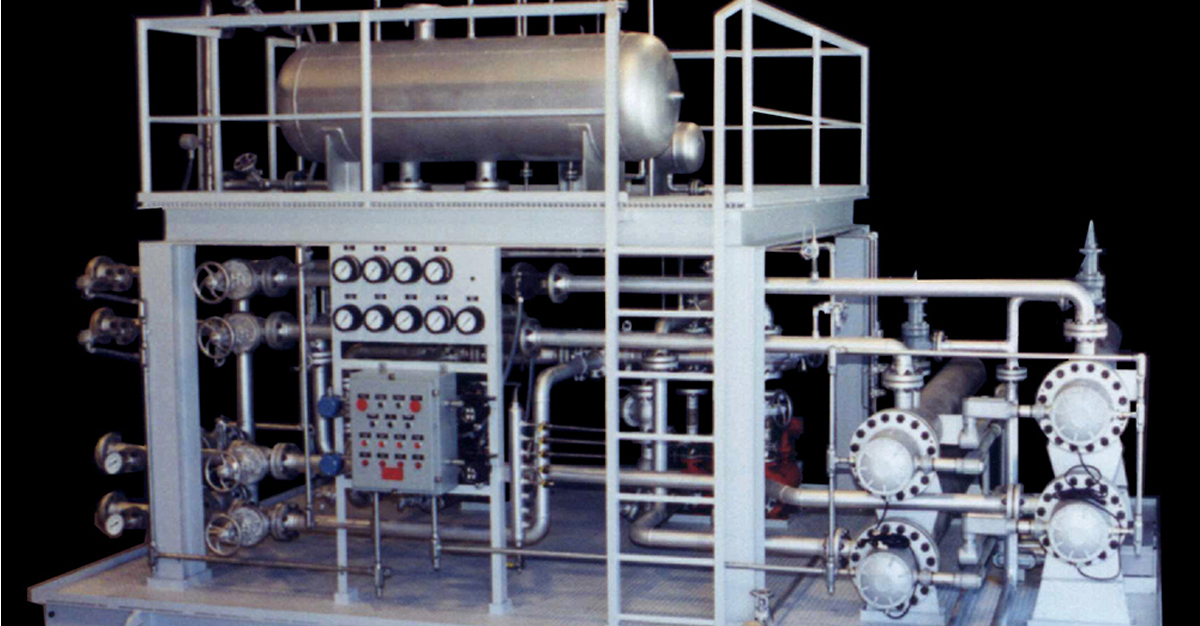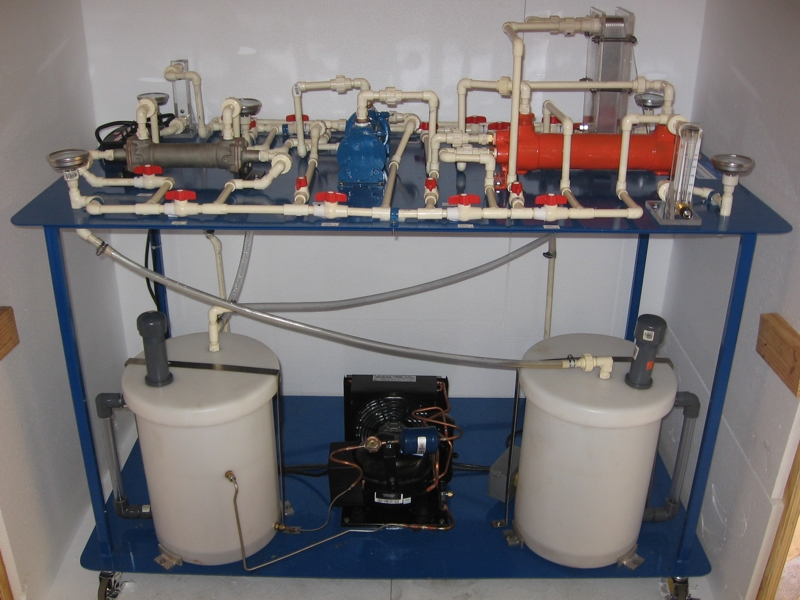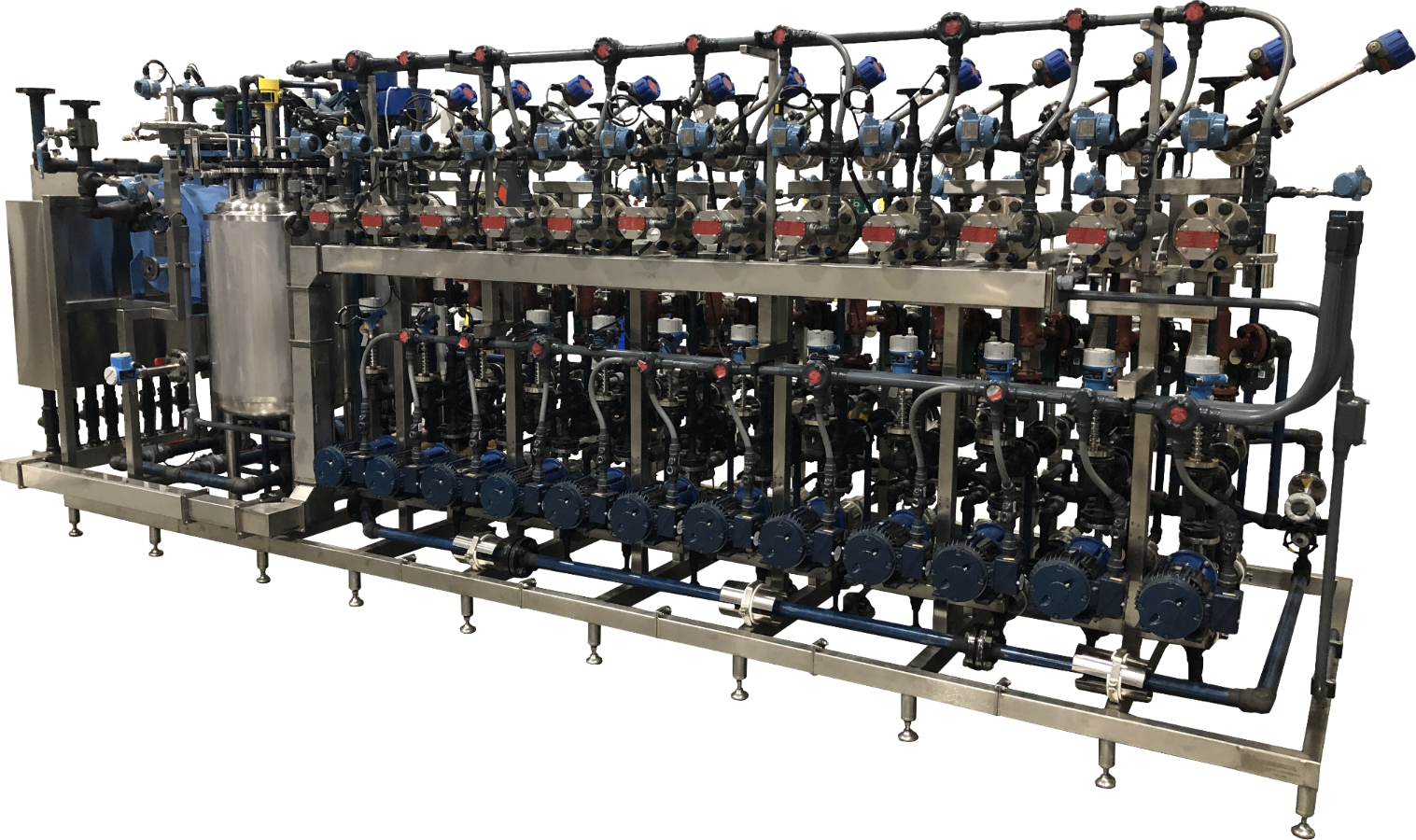10 Essential Thermal Innovations Driving DVS Heat Transfer Systems Forward
Wiki Article
The Duty of Heat Transfer Equipments in Sustainable Power Solutions for the Future
Heat transfer systems are important in the mission for lasting energy solutions. They enhance thermal energy monitoring, boosting the efficiency of renewable modern technologies. By employing mechanisms like radiation, convection, and transmission, these systems reduce energy losses. Their duty in solar thermal and geothermal applications is specifically significant. As developments arise, the potential for more improvements increases crucial questions about future energy strategies. What growths will form the landscape of sustainable energy?Recognizing Heat Transfer Systems

The Importance of Thermal Energy Administration
Reliable thermal power administration is important for optimizing power effectiveness and decreasing waste in various systems. By regulating temperature and maximizing Heat transfer processes, organizations can markedly decrease energy consumption and functional costs. Reliable management entails the implementation of sophisticated modern technologies and techniques that keep track of and regulate thermal conditions within systems, making certain that energy resources are utilized effectively. In enhancement, correct thermal energy monitoring contributes to reducing greenhouse gas emissions, aligning with worldwide sustainability objectives. It likewise improves system dependability and performance, bring about boosted product quality and longer equipment life expectancy. Inevitably, focusing on thermal power administration is a vital action in the direction of creating extra lasting energy solutions and fostering an accountable approach to power usage in household and industrial contexts.Applications of Heat Transfer in Renewable Resource
While different eco-friendly energy sources assure sustainability, the efficient application of Heat transfer plays a necessary role in their effectiveness. In wind energy systems, Heat transfer is utilized for generator component cooling, enhancing efficiency and longevity. Geothermal energy depends on efficient Heat exchange between the planet's subsurface and the liquid flowing in the system, optimizing energy extraction. Biomass energy processes likewise profit from Heat transfer, as it aids in transforming organic materials into usable fuel through pyrolysis and gasification. In addition, in hydropower, maintaining ideal temperature levels in reservoirs can boost energy result. Each of these applications shows the critical significance of Heat transfer systems in enhancing renewable resource technologies, inevitably adding to a much more lasting power future.Enhancing Solar Thermal Power Efficiency
As solar thermal power systems continue to develop, boosting their effectiveness has come to be essential for maximizing power output. Breakthroughs in Heat transfer technologies, such as boosted thermal storage space materials and cutting-edge Heat exchangers, play a significant role in improving performance. By making use of innovative products that have exceptional thermal conductivity, systems can catch and transfer Heat better. In addition, integrating radar that adhere to the sunlight's course warranties that collection agencies receive ideal solar direct exposure throughout the day. Using nanotechnology in solar absorbers can additionally raise power absorption prices. Integrating computerized control systems helps handle and manage temperatures energy distribution effectively, leading to minimized losses and improved total system performance. These improvements lead the way for even more lasting solar thermal power services in the future.Geothermal Home Heating: A Lasting Remedy
Geothermal home heating offers a sensible choice for sustainable energy, offering substantial ecological benefits through minimized greenhouse gas exhausts. Its efficiency and cost-effectiveness make it an attractive alternative to standard home heating systems. Nevertheless, difficulties related to implementation needs to be addressed to optimize its possible effect.Ecological Advantages of Geothermal
Standard heating approaches contribute considerably to greenhouse gas emissions, geothermal heating offers an engaging choice that minimizes environmental effect. By harnessing the Planet's internal Heat, geothermal systems make use of a renewable resource resource, considerably minimizing dependence on fossil fuels. This method generates marginal carbon discharges, making it a cleaner alternative for business and property home heating. Additionally, geothermal systems promote power performance, as they need less power compared to traditional heater. DVS Heat Transfer Systems. The usage of geothermal energy also helps in reducing air contamination, boosting regional air high quality and public wellness. As a sustainable option, geothermal home heating supports climate change reduction initiatives, placing itself as an essential component in the shift towards a greener futurePerformance and Cost-Effectiveness
Exactly how does geothermal home heating gauge up in terms of efficiency and cost-effectiveness contrasted to traditional furnace? Geothermal home heating shows superior effectiveness, frequently achieving a coefficient of performance (POLICE OFFICER) of 3 to 5, DVS Heat Transfer Systems meaning it produces 3 to five devices of Heat for each device of power consumed. This effectiveness converts right into lower operating expenses, specifically in regions with secure geothermal sources. Initial setup expenses can be greater than standard systems; however, long-lasting savings on power bills and reduced upkeep expenses can balance out these in advance investments. Furthermore, many governments incentivize geothermal systems with rebates and tax obligation credits, enhancing their cost-effectiveness. Overall, geothermal home heating becomes a sustainable and economically sensible choice to more traditional home heating remedies.Implementation Challenges and Solutions
Numerous difficulties can impede the prevalent application of geothermal heating unit, regardless of their clear benefits as a lasting energy solution. High preliminary installation prices typically prevent house owners and investors, making financing a significant barrier. In addition, the geographical limitations of appropriate geothermal sites restrict access in specific areas. Neighborhood regulations and allowing procedures can also make complex project advancement, resulting in delays. Public recognition and understanding of geothermal systems stay low, preventing acceptance. To resolve these challenges, targeted education campaigns can improve public expertise, while federal government motivations might minimize economic problems. Working together with regional authorities to enhance guidelines may assist in smoother task authorizations, ultimately advertising the adoption of geothermal heating as a practical, lasting energy option.Technologies in Heat Transfer Technologies
Innovations in Heat transfer modern technologies play an important role in improving power effectiveness and sustainability. Advanced Heat exchangers and stage change products are at the forefront of these growths, supplying substantial improvements in thermal management. These innovations not just enhance energy usage yet additionally contribute to minimizing environmental effect in various applications.Advanced Heat Exchangers
Advanced Heat exchangers play a necessary duty in improving energy performance throughout numerous applications in lasting power services. These tools help with the transfer of Heat between two or more liquids, noticeably lowering energy usage in processes such as industrial home heating, air conditioning, and power generation. Advancements in products and style, such as using nanofluids and portable configurations, have caused boosted thermal efficiency and minimized dimension needs. Additionally, advancements in digital tracking and control systems enable for enhanced procedure, further boosting effectiveness. By decreasing waste Heat and maximizing energy recuperation, advanced Heat exchangers add to reduce carbon impacts and sustain the shift towards eco-friendly innovations. Their continued growth is crucial for attaining international power sustainability goals.
Phase Change Materials
The integration of phase adjustment products (PCMs) right into Heat transfer modern technologies stands for a considerable innovation in energy management and efficiency. PCMs take in and launch thermal energy during their phase adjustments, making it possible for effective temperature level guideline in building materials and energy systems. By keeping excess Heat during optimal periods and launching it when need increases, PCMs add to load changing and power preservation - DVS Heat Transfer Systems. This capability enhances the performance of renewable resource systems, especially in solar thermal applications. Furthermore, PCMs can boost the thermal comfort of indoor settings, reducing dependence on traditional heating and cooling down techniques. As technologies in PCM formulas continue to emerge, their duty in lasting energy options is positioned to grow, providing promising opportunities for future study and application
Future Potential Customers for Heat Transfer in Lasting Energy
As the demand for sustainable energy solutions proceeds to climb, the role of Heat transfer systems is becoming significantly crucial in forming future innovations. Technologies in products and styles are expected to boost effectiveness in Heat transfer, decreasing power losses in numerous applications. The combination of innovative thermal storage space systems, such as phase modification products and thermochemical storage space, will make it possible for better management of energy sources. Research right into nanofluids and biomimetic Heat exchangers might additionally optimize thermal efficiency. The adoption of clever technologies will certainly allow for real-time tracking and flexible control of Heat transfer processes. These developments are positioned to greatly add to the overall efficiency and sustainability of energy systems, leading the way for an extra energy-efficient future.Frequently Asked Questions
Exactly How Can Individuals Apply Heat Transfer Solution at Home?

People can implement Heat transfer systems in your home by setting up energy-efficient home appliances, utilizing glowing heating, and optimizing insulation. These steps boost power effectiveness, minimize prices, and advertise sustainable techniques in domestic settings.

What Are the Prices Linked With Mounting Heat Transfer Solutions?
The prices connected with setting up Heat transfer systems vary commonly, typically incorporating devices, installation labor, and maintenance. Variables such as system kind, home size, and regional regulations significantly affect the total expense included.Exist Government Rewards for Heat Transfer System Installations?
Government motivations for Heat transfer system setups differ by region and can consist of tax grants, discounts, and credit scores. These monetary benefits intend to urge fostering, ultimately promoting power effectiveness and lowering environmental effect within communities.Just How Do Heat Transfer Systems Effect Power Costs?
Heat transfer systems especially affect power expenses by optimizing energy effectiveness. By improving the transfer of Heat, these systems reduce power consumption, causing reduced utility prices and creating a much more sustainable approach to energy management.What Maintenance Is Required for Heat Transfer Systems?
Maintenance for Heat transfer systems includes routine assessments, cleaning of parts, examining fluid degrees, making certain correct insulation, and changing worn components. These tasks aid preserve efficiency, protect against breakdowns, and prolong the system's operational life expectancy.These systems promote the activity of thermal power from one medium to an additional, enabling the transfer of Heat for cooling, energy, or home heating generation objectives. Geothermal power depends on reliable Heat exchange in between the planet's subsurface and the liquid distributing in the system, maximizing power extraction. Additionally, geothermal systems promote energy efficiency, as they require much less power contrasted to traditional home heating systems. Advanced Heat exchangers play an important duty in improving power effectiveness across numerous applications in sustainable power options. Heat transfer systems notably affect energy bills by maximizing power performance.
Report this wiki page